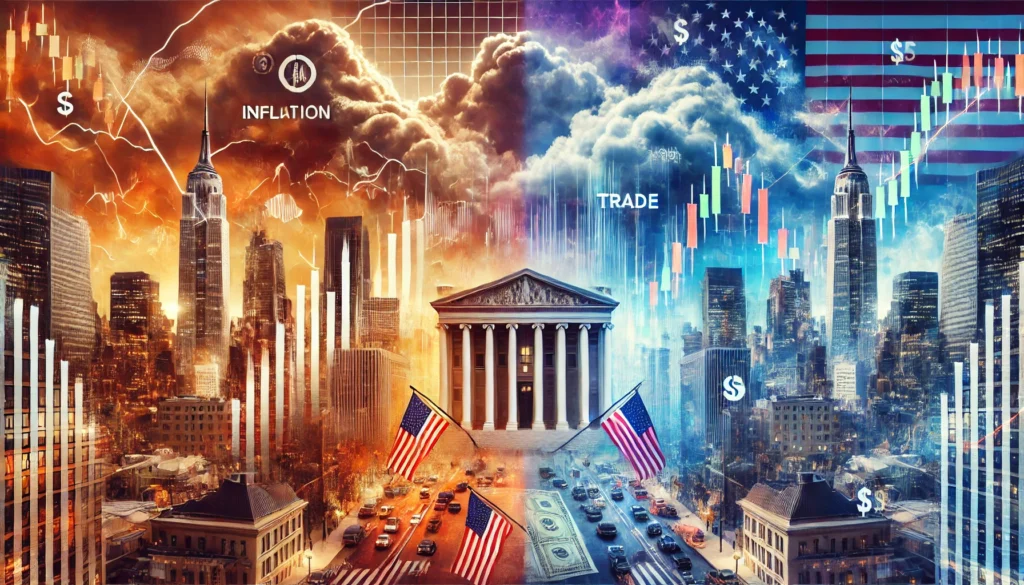Published Date: March 17, 2025 ✍️ Author: Global World Citizen News Team 🌍 Source: GlobalWorldCitizen.com
A Rocky Road Ahead for the U.S. Economy
Wall Street analysts and economists are increasingly aligning on a more volatile near-term trajectory for the U.S. economy. The outlook has grown more uncertain than expected, with slower growth, rising inflationary pressures, and complex global financial dynamics reshaping the economic landscape. While some experts argue that the U.S. is positioning itself for long-term resilience, others warn of structural weaknesses that could threaten economic stability.
Warning Signs in Economic Indicators
Recent soft economic data is flashing warning signals, with consumer confidence tumbling. The latest University of Michigan consumer sentiment survey revealed a sharp decline in confidence, income expectations, and inflation outlook—suggesting that Americans are growing more pessimistic about the economy.
Hard economic data is beginning to reflect these concerns, signaling likely downward revisions in 2025 growth forecasts. The International Monetary Fund (IMF) had initially projected a 2.7% U.S. economic growth rate for 2025, citing strong demand and a positive wealth effect from market gains. However, many analysts now expect a downward revision to 2% or lower.
Goldman Sachs has already revised its forecast to 1.7%, citing increased uncertainty over consumer spending, trade disruptions, and federal policy volatility.
What’s Driving the Economic Slowdown?
A confluence of economic and policy risks is contributing to the growing uncertainty:




The Trump administration has described these economic fluctuations as part of a necessary “detox,” downplaying concerns as temporary market corrections. However, analysts warn that continued economic turbulence could erode consumer and investor confidence, making a recession more likely.
Long-Term U.S. Economic Prospects: A Sharp Divide
While there is broad agreement on short-term economic volatility, experts remain deeply divided on what this means for the U.S. economy in the long run.

Some analysts argue that this transitional period will ultimately enhance U.S. economic resilience by fostering a leaner private sector, lower corporate taxes, and streamlined government regulations. They envision a future where:




Others warn that economic uncertainty, inconsistent policies, and a deteriorating rule of law could permanently weaken the U.S. economy. Their concerns include:



Conclusion: A Bumpy Road Ahead
There is now broad consensus that the U.S. faces a rough economic path in the coming months. However, the long-term impact of these disruptions remains uncertain. Will the U.S. emerge stronger and more competitive, or are these signs of a deeper, more structural decline?

